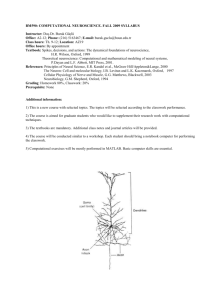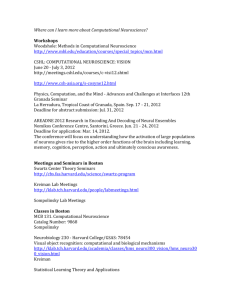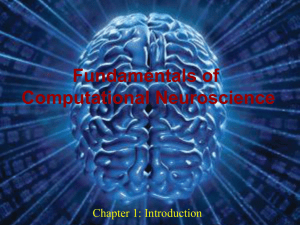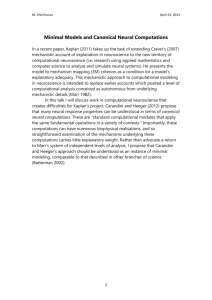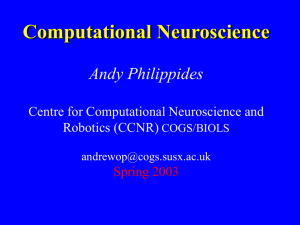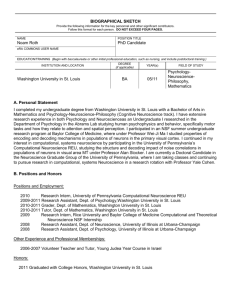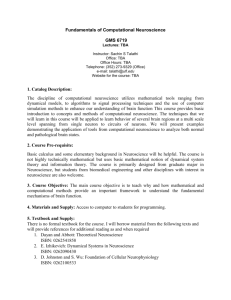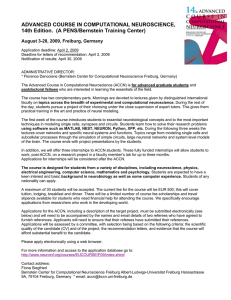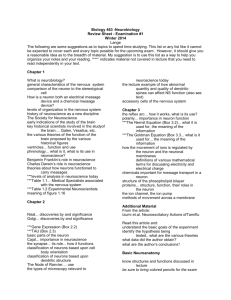Computational Neuroscience 5201
advertisement
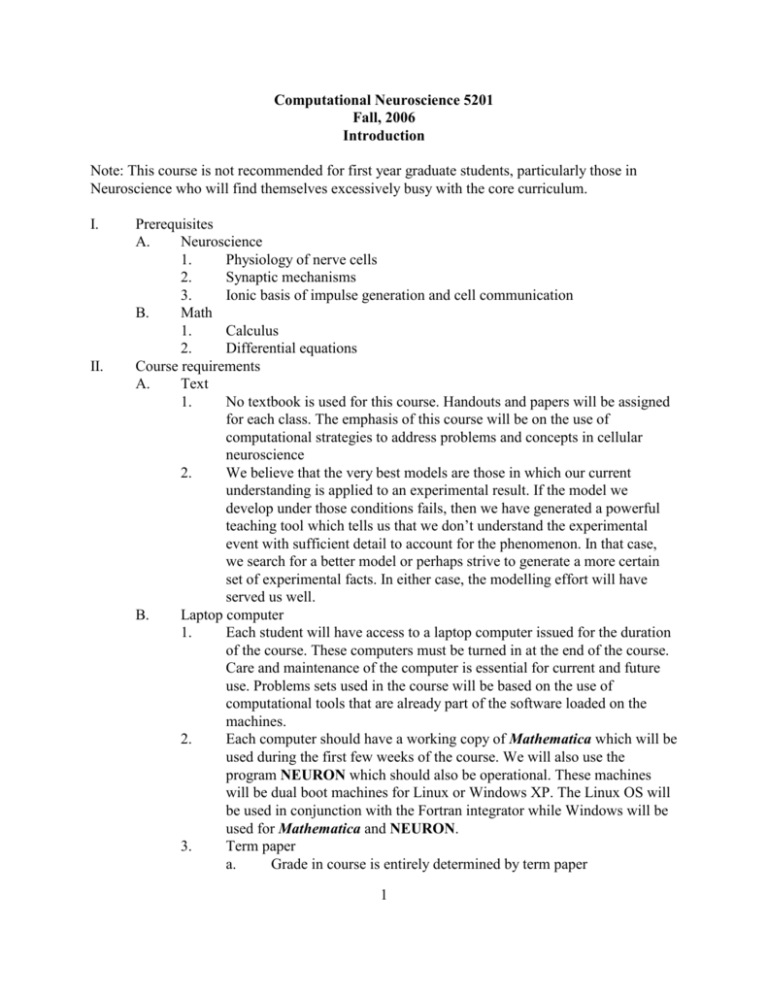
Computational Neuroscience 5201 Fall, 2006 Introduction Note: This course is not recommended for first year graduate students, particularly those in Neuroscience who will find themselves excessively busy with the core curriculum. I. II. Prerequisites A. Neuroscience 1. Physiology of nerve cells 2. Synaptic mechanisms 3. Ionic basis of impulse generation and cell communication B. Math 1. Calculus 2. Differential equations Course requirements A. Text 1. No textbook is used for this course. Handouts and papers will be assigned for each class. The emphasis of this course will be on the use of computational strategies to address problems and concepts in cellular neuroscience 2. We believe that the very best models are those in which our current understanding is applied to an experimental result. If the model we develop under those conditions fails, then we have generated a powerful teaching tool which tells us that we don’t understand the experimental event with sufficient detail to account for the phenomenon. In that case, we search for a better model or perhaps strive to generate a more certain set of experimental facts. In either case, the modelling effort will have served us well. B. Laptop computer 1. Each student will have access to a laptop computer issued for the duration of the course. These computers must be turned in at the end of the course. Care and maintenance of the computer is essential for current and future use. Problems sets used in the course will be based on the use of computational tools that are already part of the software loaded on the machines. 2. Each computer should have a working copy of Mathematica which will be used during the first few weeks of the course. We will also use the program NEURON which should also be operational. These machines will be dual boot machines for Linux or Windows XP. The Linux OS will be used in conjunction with the Fortran integrator while Windows will be used for Mathematica and NEURON. 3. Term paper a. Grade in course is entirely determined by term paper 1 b. c. d. e. f. g. Paper will be based on the use of a computational approach to address a scientific question in neuroscience at the cellular level We encourage students to work with their faculty mentor to devise a computational strategy that is of interest to them and their laboratory and could be used as a component of their thesis research. If you can’t work at a viable topic with your faculty advisor, we will generate a list of topics that could be used for this purpose. Methods used for computer simulations in the term paper will be based on the use of the software tools used in the course. Each student needs to select a single problem, but a group of students may work together on a single problem, each taking a separate component. In this case, a joint paper will be acceptable. Instructions for form and length of paper will be provided 2
